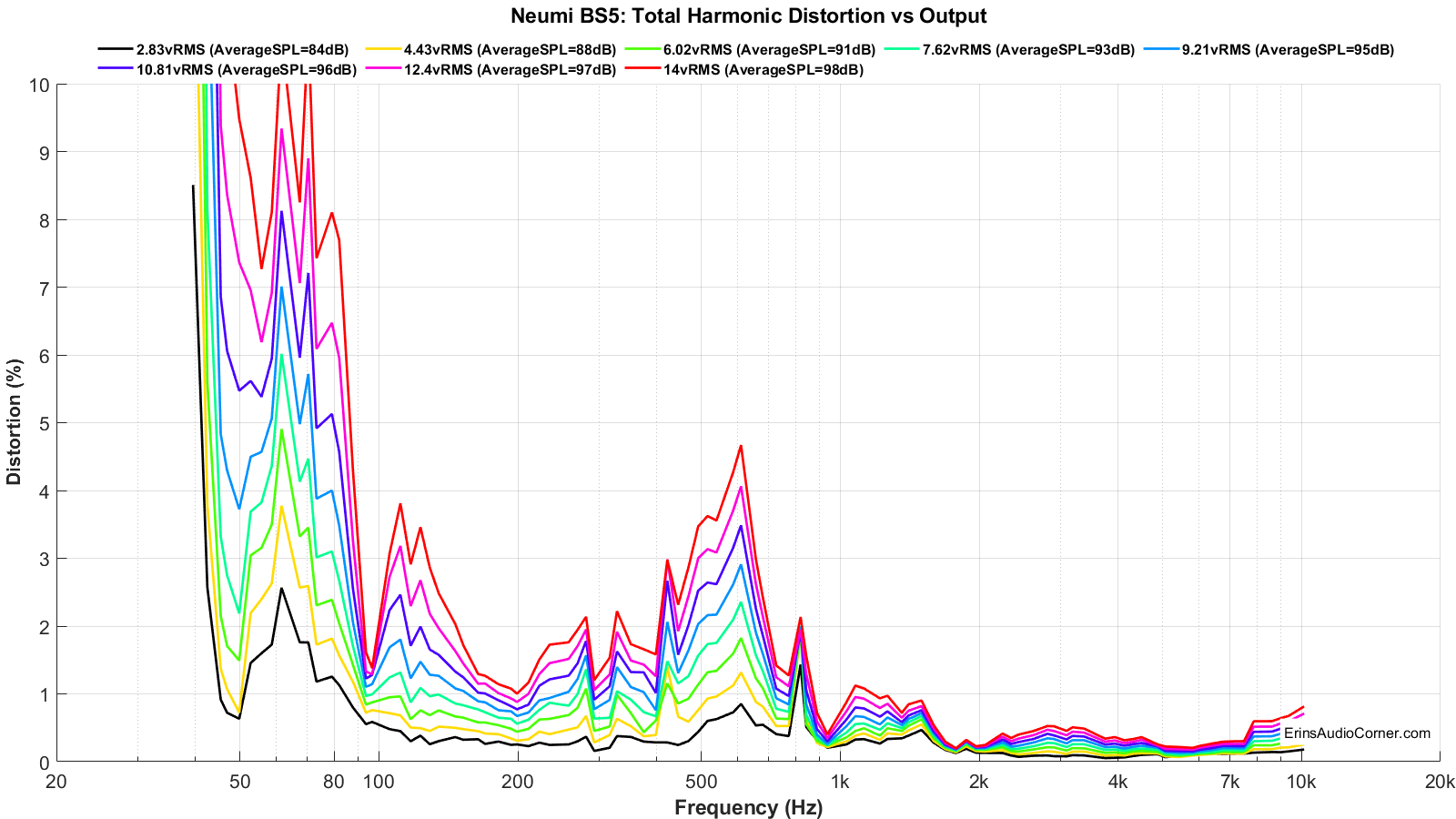(The link to the flat-pack leads back to Your home page.)
The ribbon, sealed or not dictates a higher x/o frequency, but still it distorts considerably. We have uneven directivity in the vertical, the possible mechanical vulnerability, the high price. For not more than a tiny bit of wider dispersion in the tops of the hights.
The BMR again dictates a higher x/o due to otherwise too high of distortion figures. Even bigger problems in respect to vertical directivity.
The woofer is expensive, especially when compared to more contemporary offers. With a more competent mid the x/o would be more relaxed, the woofer could have been way cheeper. Alltogether with less intermodulation, where the woofer is always the main contributor.
So, it seems funny, but the measurements don't look that bad. Two things appear less fortunate to my eye.
- The curved sidewalls are inacceptable, design-wise.
- The distortion, whether perceptible or not, must not be. One might argue, that these aren't that bad, because of and so forth, o/k. But from the standpoint of technical evaluation they are at least a hiccup.
One might take a specific distribution of maximum level versus frequency into account, as it is demanded by a typical music program. To some accuracy it can be discribed as this:
https://www.hifi-selbstbau.de/images/stories/grundlagen/waveana/Track260MaxL.png
So, the demand in the deepest bass region is considerably less than mostly anticipated. Demand in lower treble is way less than in the mids. But even with the lowest levels the ribbon distorts in the 2..3% region.
A second irregularity is the interference that comes from the baffle dimensions. The discontinuity in the dispersion comes up around 3..4kHz.
And third the compression has a hot spot exactly there.
I think the ribbon is clearly the archilles heel for the overall design. I assume it is the most expensive single part. Does it make sense, really?

